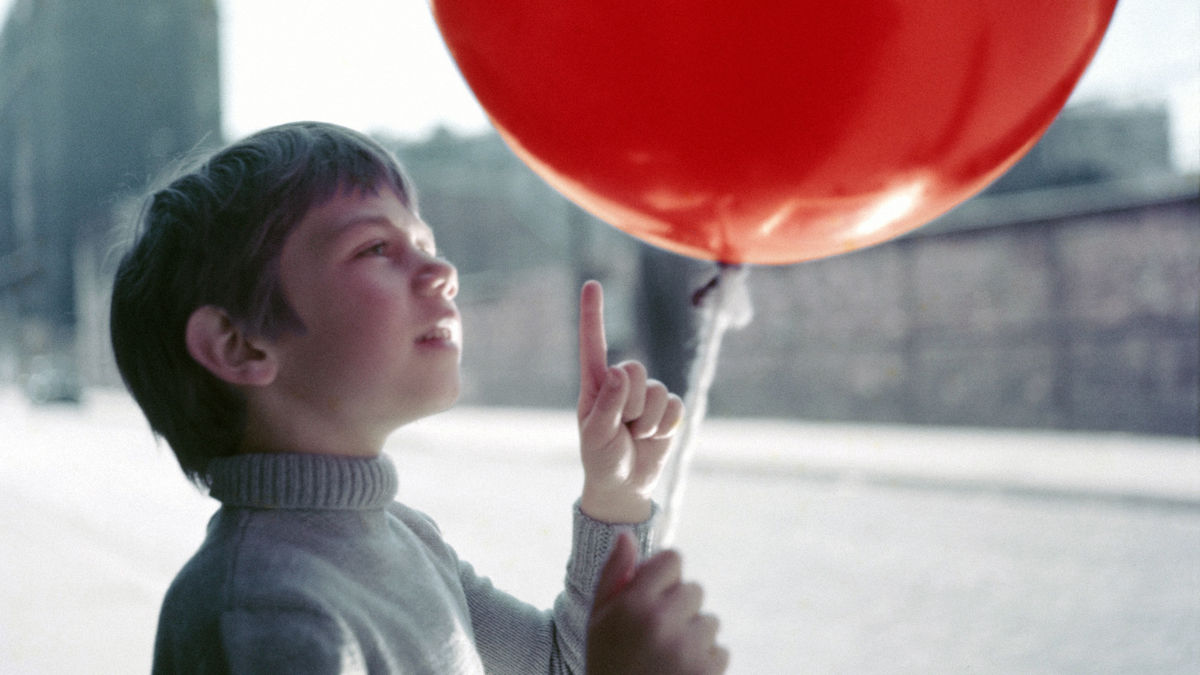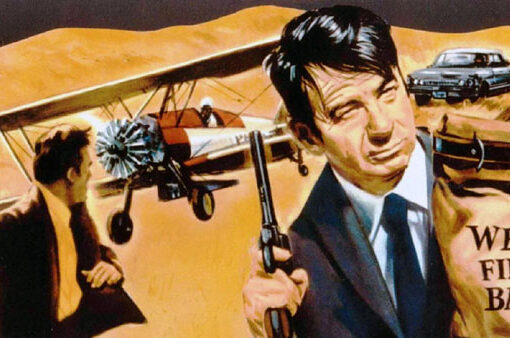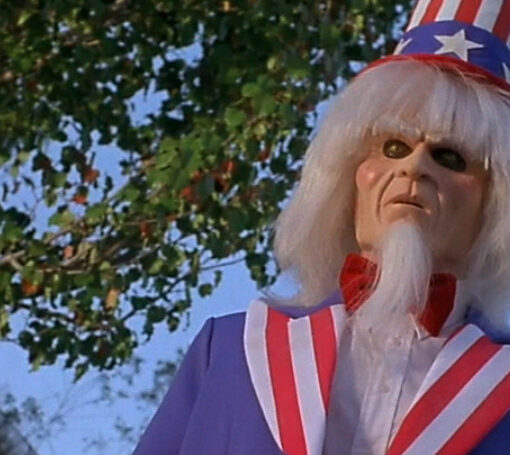The Red Balloon’s dream opens with a boy (Pascale Lamorisse) descending into the panoramic view of fifties Paris. For a moment it seems like he is about to enter a live theatrical scenery.
He is to be our protagonist and this backdrop is to become his playground. His very first act after the descent is to pluck a red balloon off a pole. Armed with this new ‘companion’, he sets on several adventures across his playfield – running encumbrance-free on the road, into fairs, befriending kind strangers, all the while displaying his new acquisition around the city.
We are acquainted with a child’s view of a bustling metropolis: he lives in an adult’s world without following its diktats. So, he doesn’t show the restlessness of a daily commuter (choosing to run to his school when he is not permitted to board the bus with his balloon) or the devotion of a church-goer (being shown the door for bringing his friend there). Being a child on the streets, he has a free will all the way from his home to school.
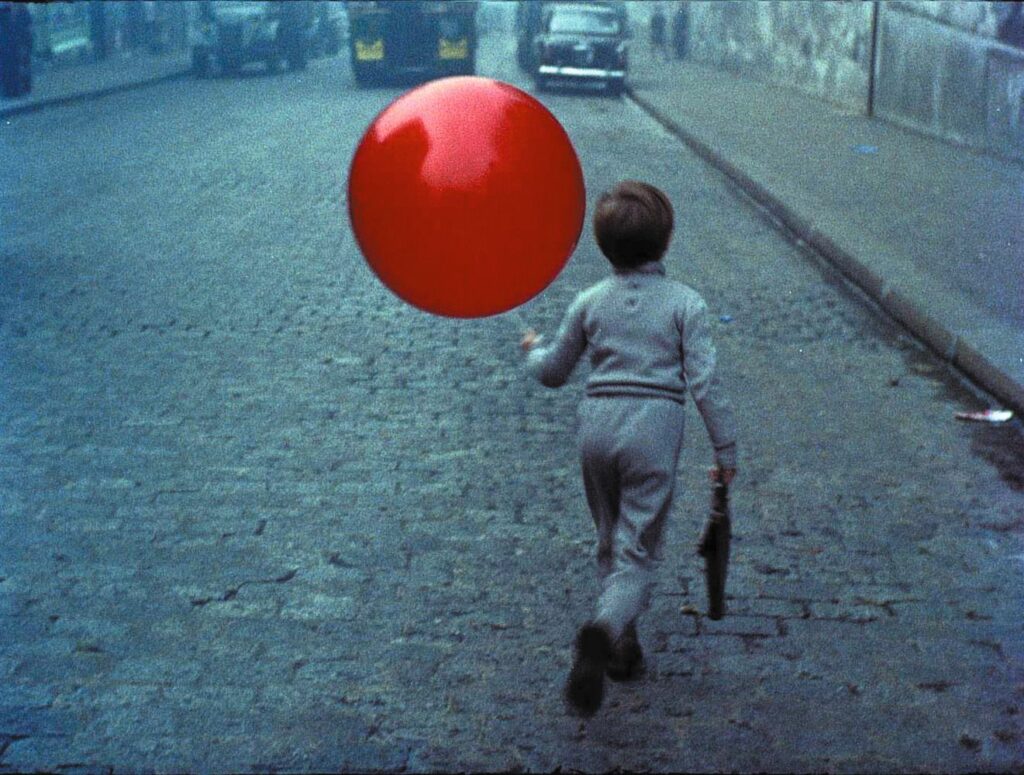
It is at these two places where the process of his ‘adulting’ is supposed to happen, yet as we see in the film, they don’t have complete control over him. Though both spaces have a right to control and punish him, Pascale retains enough of his childhood ‘spirit’ here too.
Pascale’s unbridled adventures take a sour turn when he encounters the group of ruffian boys, who have unfriendly intentions towards Pascale and his balloon.
For this lot, the balloon is little more than an object: one to be fiddled, enjoyed and discarded. This becomes most apparent through the sequence where a boy is constantly trying to strike the red balloon with a stick, the scene is reminiscent of a painting shown earlier, which depicts a little girl in red frock playing with a hoop and stick.
Pascale’s classmates are slightly better but even their instinctive reaction is to try and take ownership of this magical entity. Pascale’s friend manages to interest the adults too. Its free will evokes intrigue, joy and surprise.
On the other hand, the keepers of order (the headmaster at school, and the beadle at church) are deeply annoyed by the balloon’s independence, which causes confusion in their respective realms of authority.
While they can easily handle an out of line child, there is no way they can get rid of the sentient being which can fly out of their reach.
Pascale begins by exercising effective control over balloon’s conduct, taking care of its well-being, but as the balloon gains greater consciousness, this transforms into a friendship of equals. One filled with innocent mischief and pure love.
While Pascale gets into trouble from time to time due to this relationship, their bond becomes only stronger as the movie progresses. The boy protects the balloon from rain, provides it shelter in his house, and tries to save it from the street kids.
The balloon for its part stays loyal to Pascale and defends the boy whenever it can. This includes pestering the headmaster till the man releases the boy from his confinement.
The balloon’s greatest test arrives towards the end of the movie, when its own existence is imperilled by the ruffian boys but decides to risk itself in the futile quest to save Pascale from the boys.
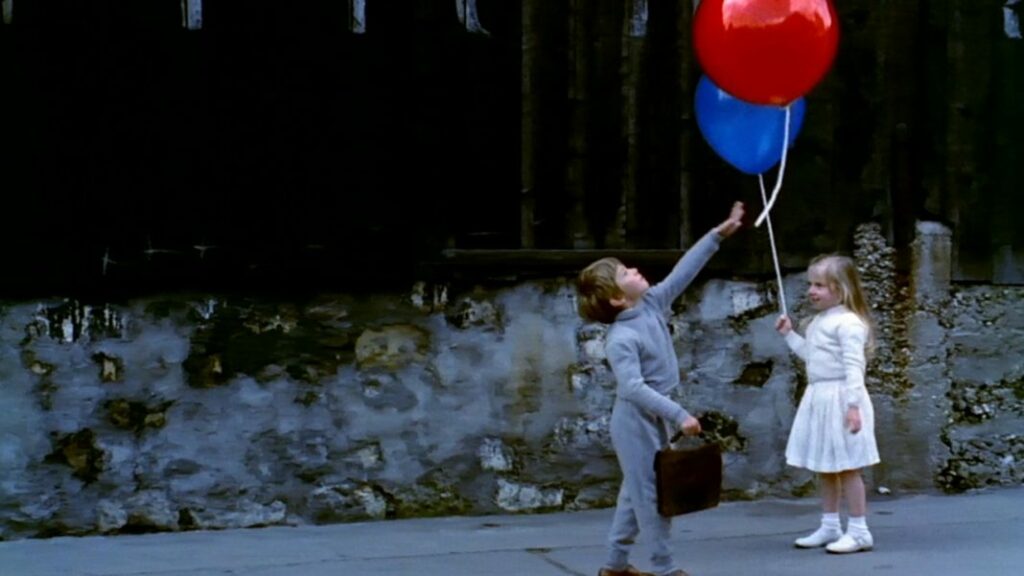
The film’s ending in the aftermath of the red balloon’s sacrifice is an interesting one. But before arriving at it we need to understand the nature of red balloon.
While the boy treats the balloon as a living being from the very first instance, it is only around nine-minute mark in the film that we come to realize that the balloon has sentience. As the film progresses, its awareness increases. At one stage, it is troubled by its own reflection at a street fair. In another scene, it chases a girl who is carrying a blue balloon, and surprisingly supposedly transfers its consciousness to the other balloon, which then starts following it.
We are never sure as to what makes the balloon alive, and what gives it the magical properties to transfer a living being’s consciousness to other balloons. Had it always been thus, and was discovered by chance? Or was it given life by Pascale’s unconditional love?
This lack of clarity makes Albert Lamorrisse‘s The Red Balloon (1956) a really special film. It is a child’s fantasy come to life, and in the process helps the viewers connect with their own childhoods. All of us held absurd and unreal notions as children which were a source of inexplicable joy, only for them to be eventually be broken down by revelations from figures of authority at home or school.
The Red Balloon flips the narrative: now adults have to deal with childhood’s unbridled glee, which is perhaps why the balloon’s existence shall forever remain unfathomable to them.
With the balloon’s demise at the hands of the older boys, it seems that this childhood fantasy is dead. Pascale will perhaps have to return heartbroken and get into ‘adulting’ like the rest of us.
However, his friend’s spirit transfers into other balloons around the city. They surround Pascale, and return to him the joy of his innocence. He enters a mystical world of unending possibilities.
And with it the spirit of childhood lives forever in The Red Balloon.

